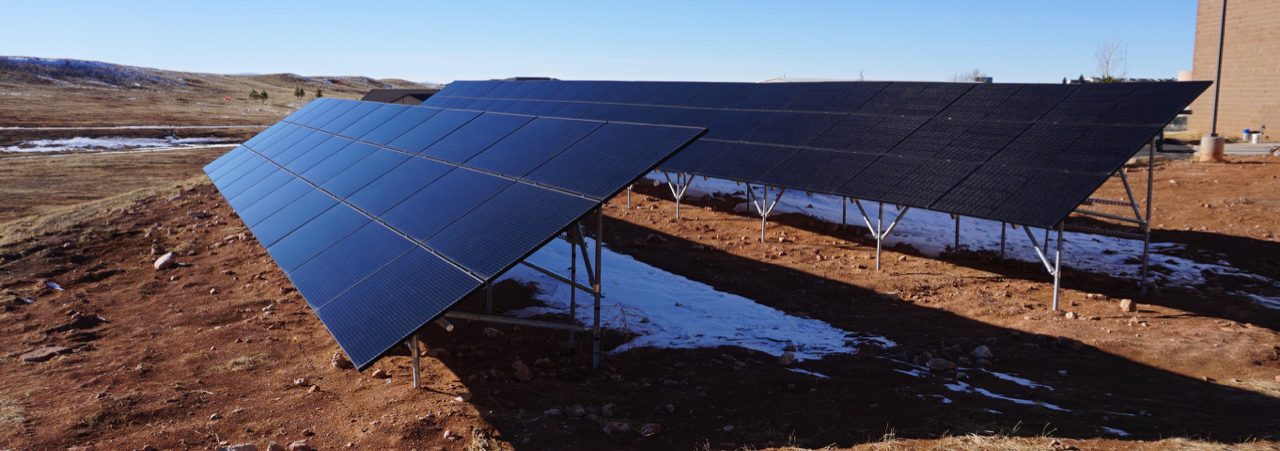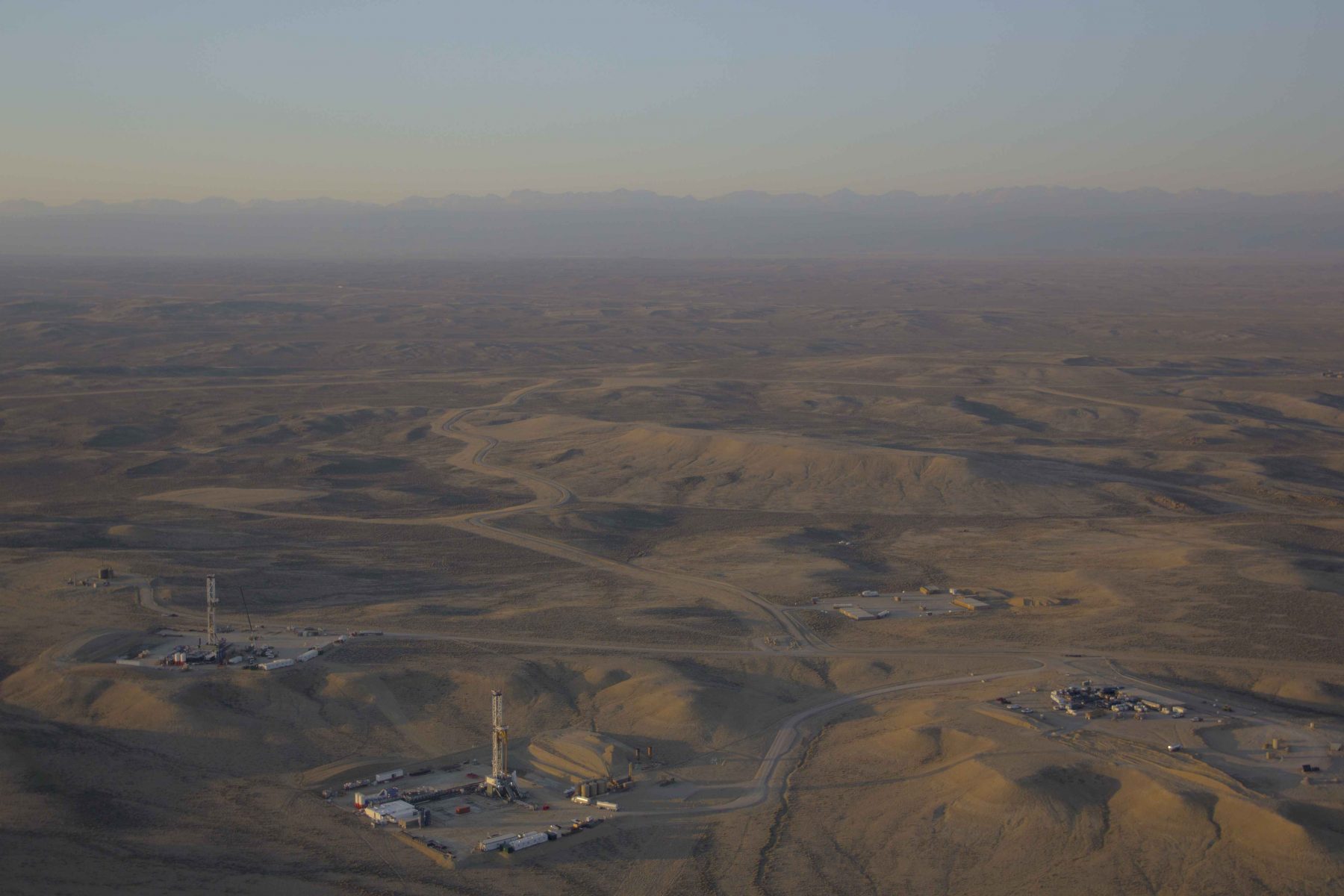EVERYTHING IN ITS PLACE
How do we make sure the coming boom in renewable energy
isn’t a bust for our wildlife and public lands?
This story, like much of the good work that happens in Lander, began as a meeting over coffee at the Lander Bake Shop. Staff from several conservation groups, including the Wyoming Outdoor Council, had gathered to look at GPS tracking collar data from pronghorn around Sweetwater Solar, Wyoming’s first large-scale solar project on public land.
The map of the pronghorn’s movement was infuriating — the 700-acre solar development had been placed right in the middle of crucial winter habitat. Fences surrounding the project had funneled many of the animals onto Highway 372 north of the city of Green River, creating hazards for both wildlife and drivers. The impacts of the Sweetwater Solar project on pronghorn were completely predictable and avoidable. But aside from a brief Environmental Assessment required by the Bureau of Land Management, there was little in the existing permitting process to direct the developers to a better location where wildlife conflicts could have been avoided.
What became clear in that meeting and in subsequent discussions was that the Sweetwater Solar project was likely a harbinger of what’s to come in the next decade as the cost of developing solar and wind energy continues to fall dramatically.
The expected boom in renewable energy puts advocates for conservation in Wyoming in a challenging spot. We understand the dire importance of transitioning to cleaner energy sources, and at the same time recognize the significant development footprint that utility-scale renewables can have on Wyoming’s wildlife and open spaces. The question and dilemma on many of our minds is this: How does Wyoming decarbonize its electricity production while not sacrificing the crucial wildlife habitat and open space that make it so unique?
As with many of the challenges our state faces, there is no silver bullet to solve this problem, but common sense and science both tell us that focusing our efforts on responsible siting and permitting processes for renewables is the logical place to start. That’s exactly what WOC tried to do with its effort to jumpstart the Wyoming Renewable Energy Siting Collaborative.
As with many of the challenges our state faces, there is no silver bullet to solve this problem, but common sense and science both tell us that focusing our efforts on responsible siting and permitting processes for renewables is the logical place to start.
After the 2020 legislative session, WOC started reaching out to stakeholders around the state to understand the perception of renewable energy and ways we might be able to improve our siting and permitting policies. We worked closely with faculty at the University of Wyoming to convene a group of policy thinkers representing conservation, industry, local government, landowners, and independent consultants to explore opportunities for the state to improve how renewable energy is sited.
During 2021 this group met nine times over Zoom to discuss issues related to renewable energy in Wyoming, including tax policy, federal and state revenue sharing, transmission development, supply chain manufacturing, and other topics. The group also learned from and consulted with experts from the Wyoming Industrial Siting Division, the Wyoming Game and Fish Department, and the Wyoming Wildlife and Natural Resource Trust. The group’s final recommendations were published in November 2021 and can be found on UW’s Ruckelshaus Institute website.
These recommendations are a start. They form an important foundation for future policy and advocacy work, especially as our country moves to decarbonize electricity production and accelerate the growth of renewables. They also show that industry and conservation can work together to agree on important concepts moving forward.
Some of the most important points of agreement in these recommendations address the need for more proactive planning for renewable development on public lands, the need for early and frequent consultation with the Wyoming Game and Fish Department to avoid wildlife conflicts, and the need to evaluate previously disturbed locations as places to site renewable energy. There is also strong agreement on the importance of public transparency and engagement as projects move forward so impacted citizens and communities have opportunities for meaningful input on project proposals.
We know that more wind and solar energy is on the horizon, and the development of these resources will present historic challenges and opportunities for Wyoming. But as with all development, we must insist that this growth be done on our terms — in a responsible and measured way — that does not degrade and diminish the very things clean energy is supposed to protect. Holding that line will require leadership at the state level. It will also take collaborative efforts like the one that played out last year at the University of Wyoming — with the full spectrum of experts and advocates coming together with a shared goal of making sure future development is sited appropriately. We’ve already seen the impacts on wildlife when things go wrong. But done right, renewable energy development could be an asset, not a liability, to Wyoming’s environment and quality of life.



